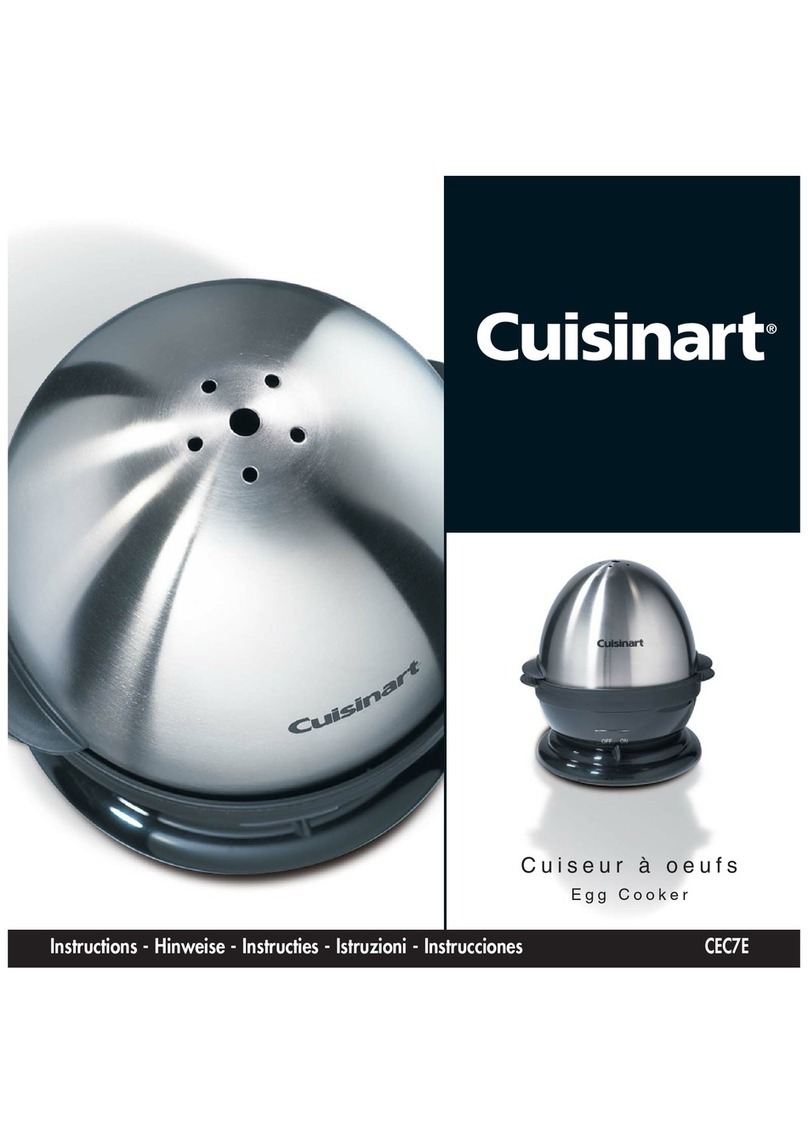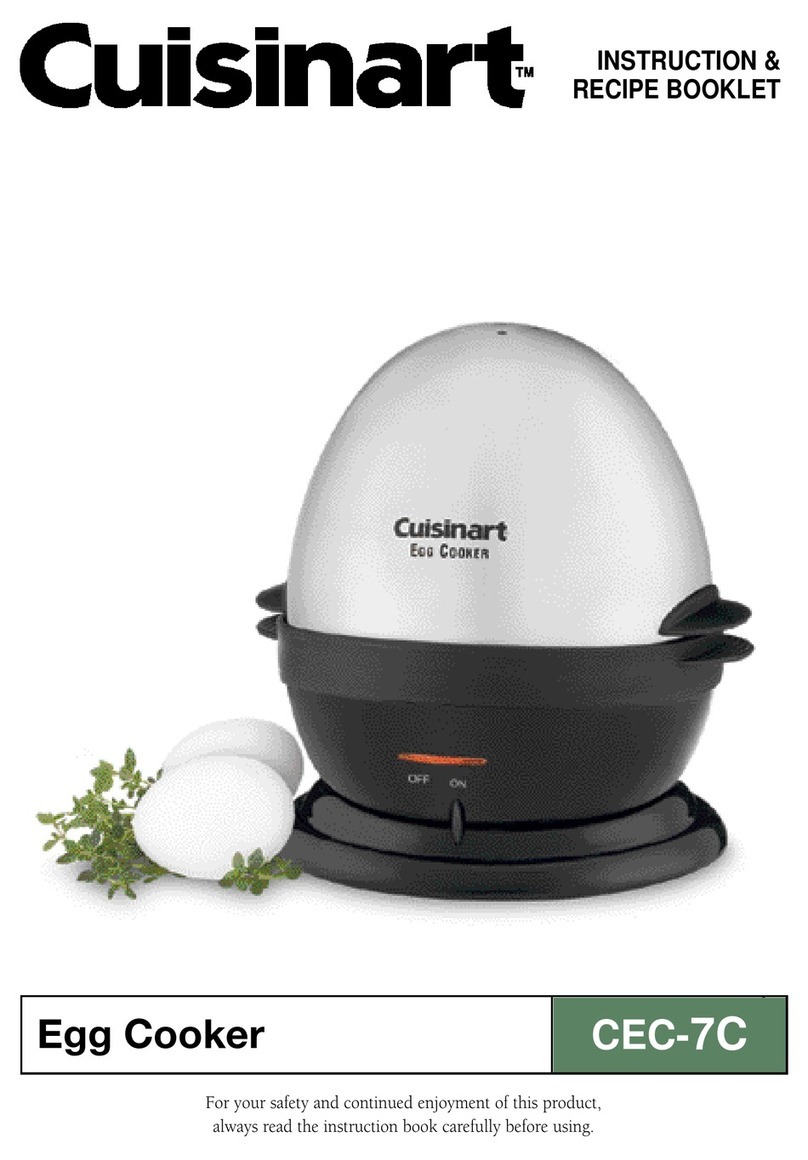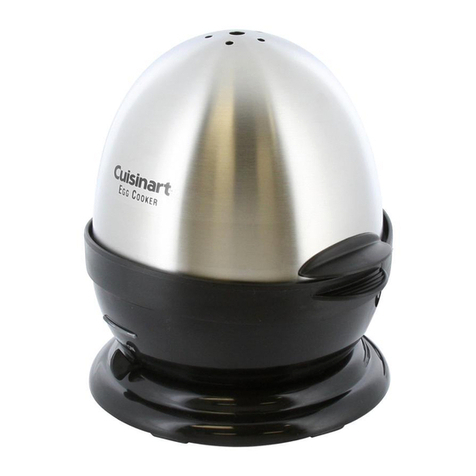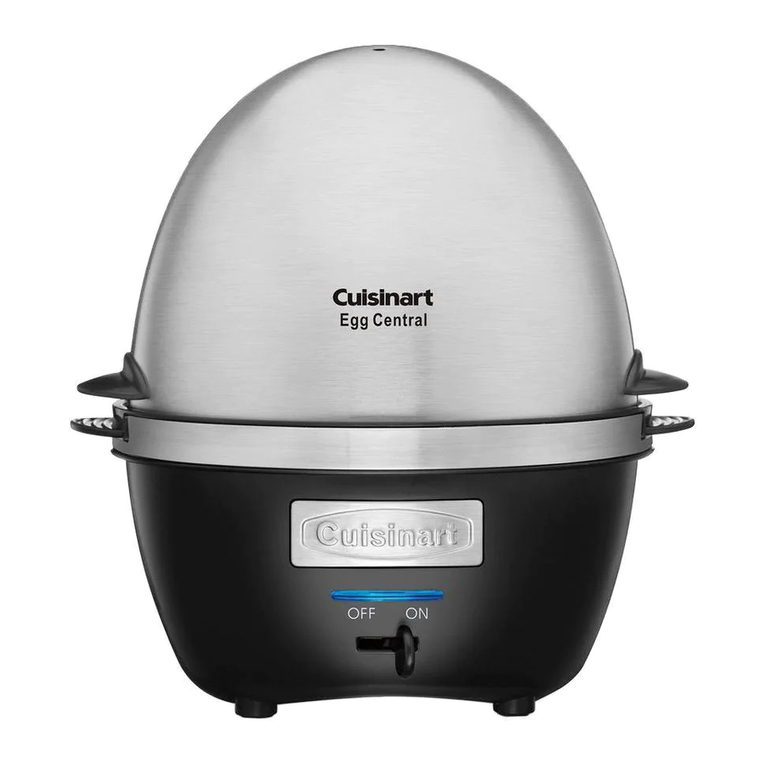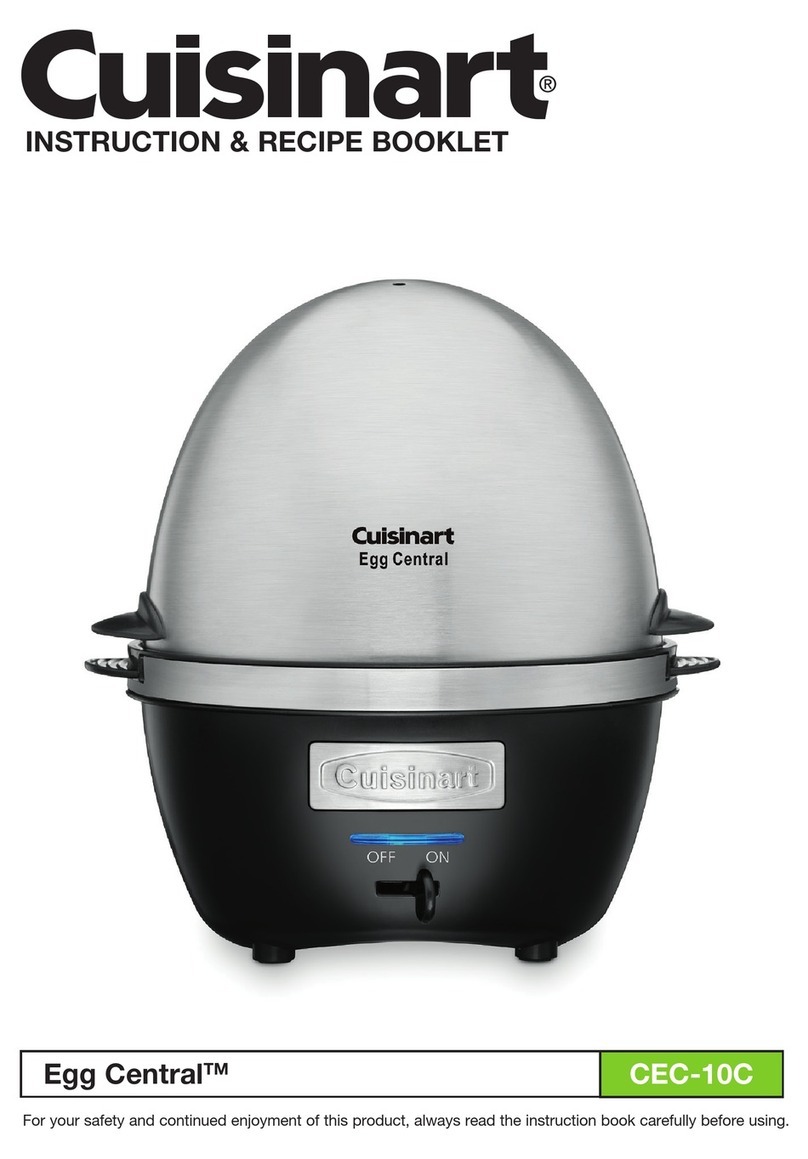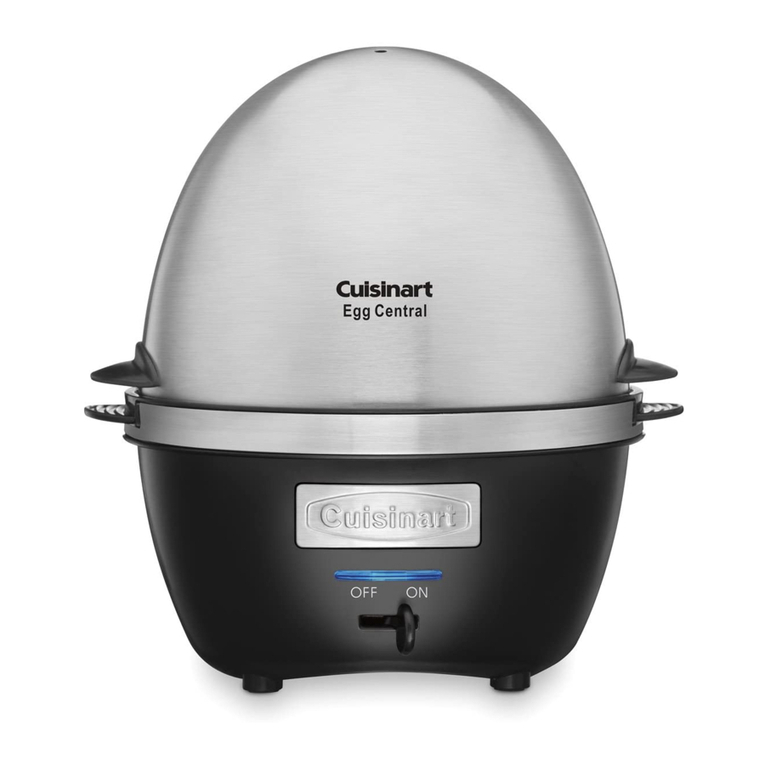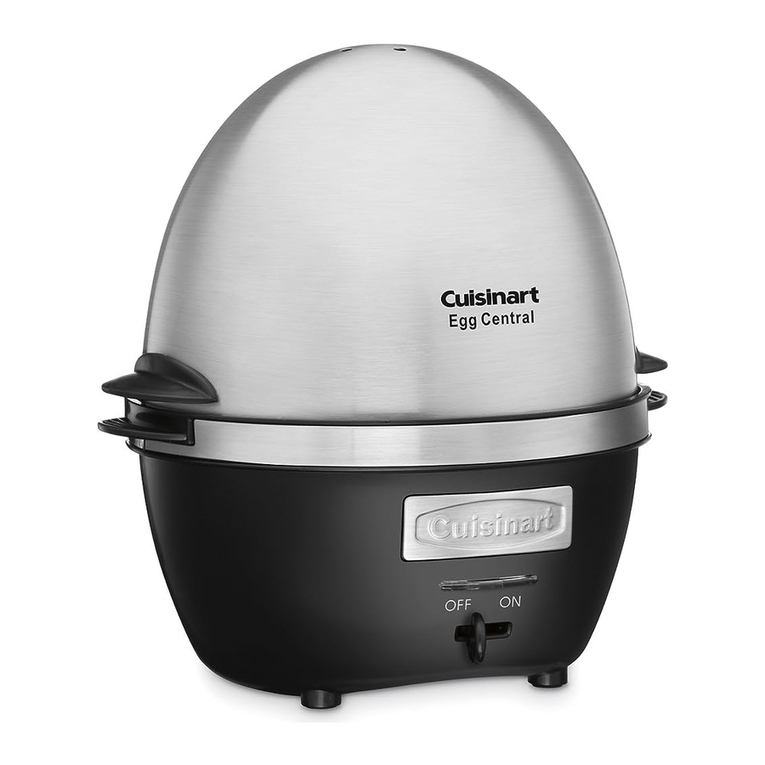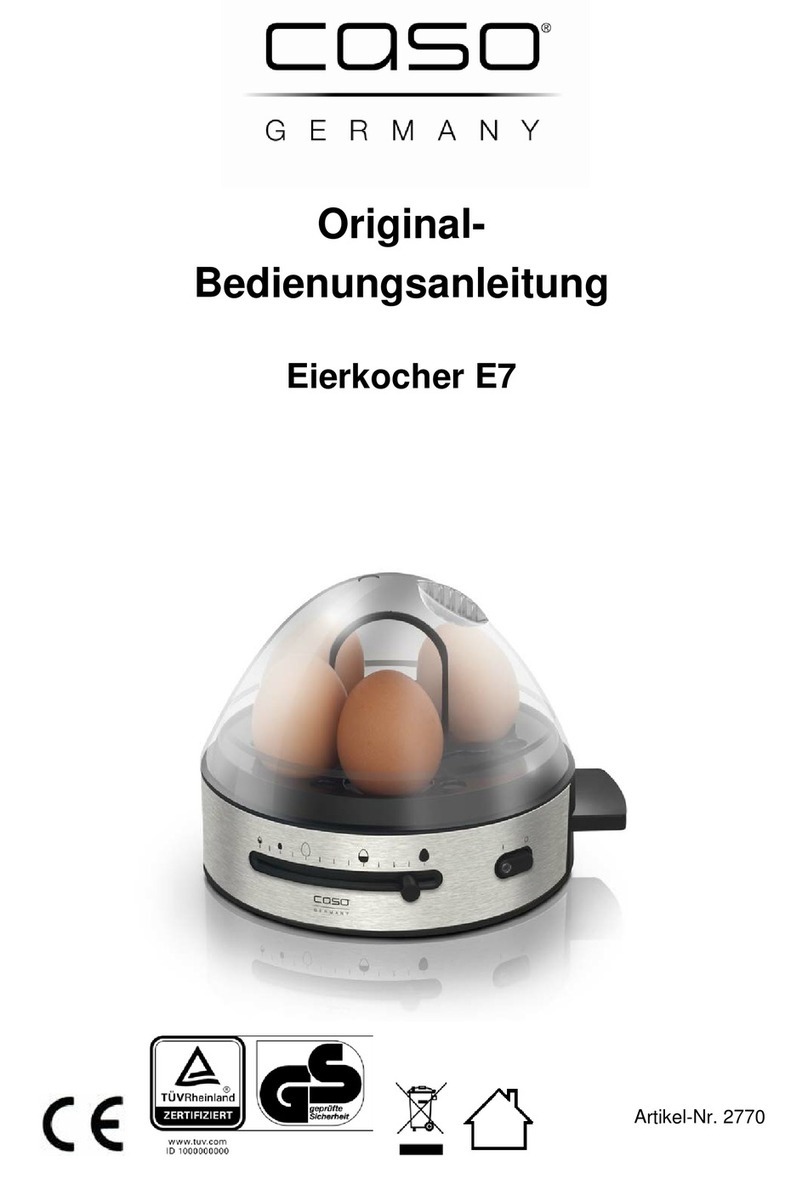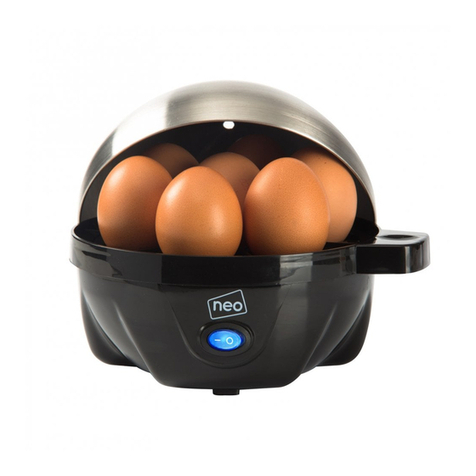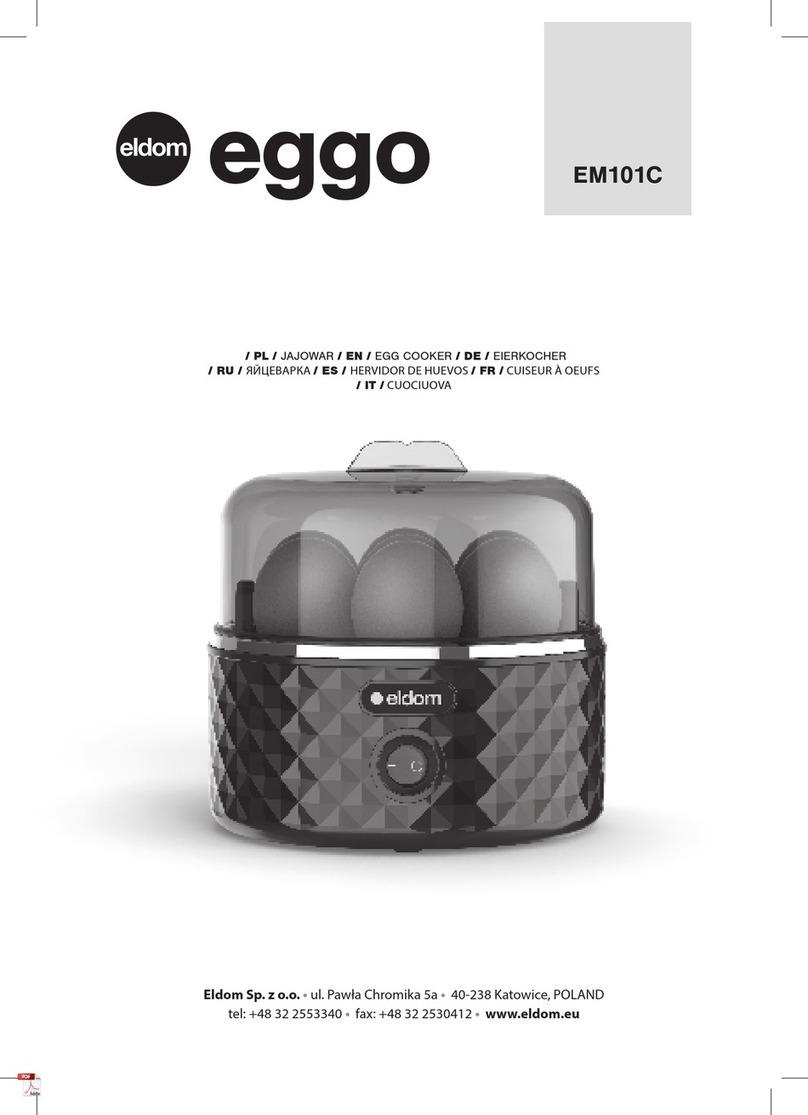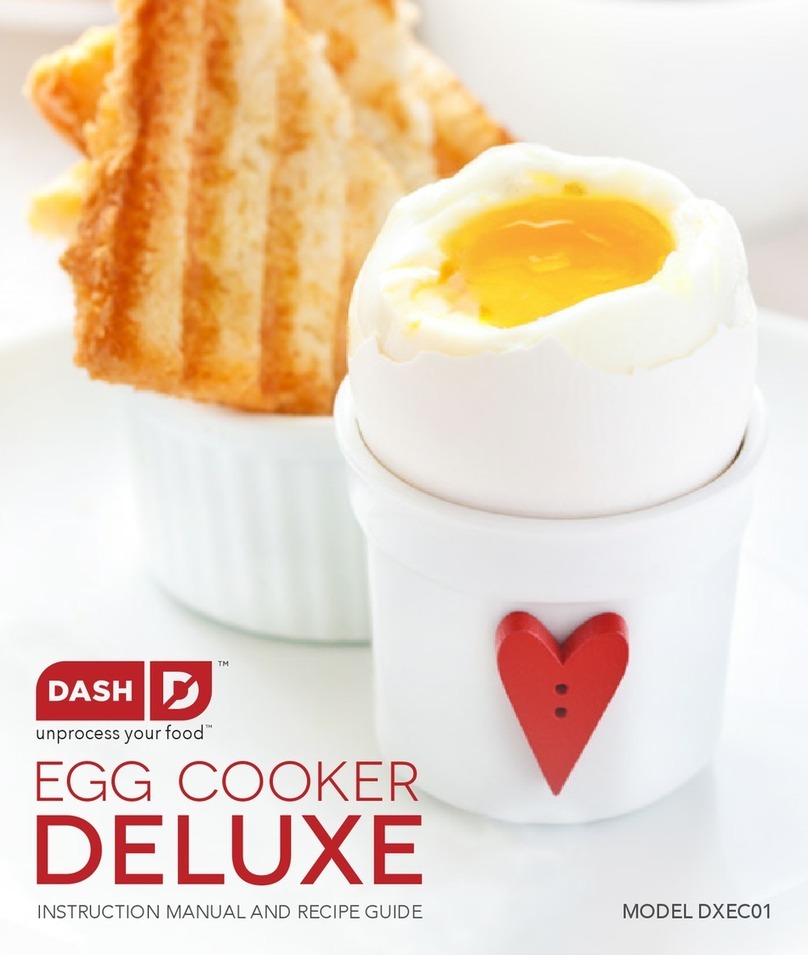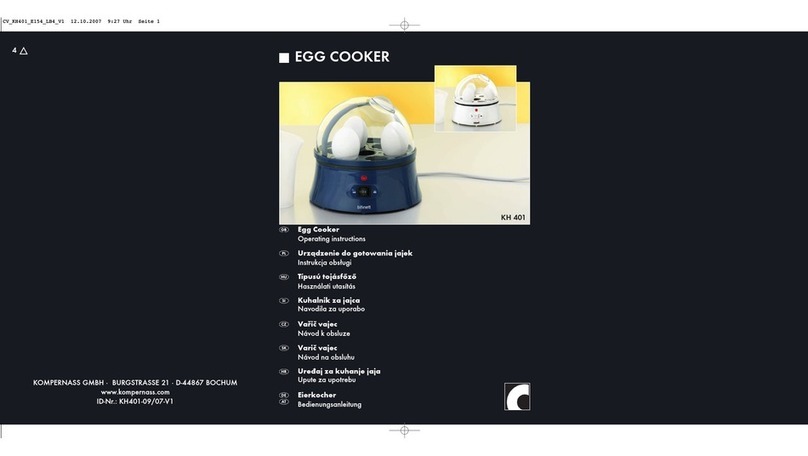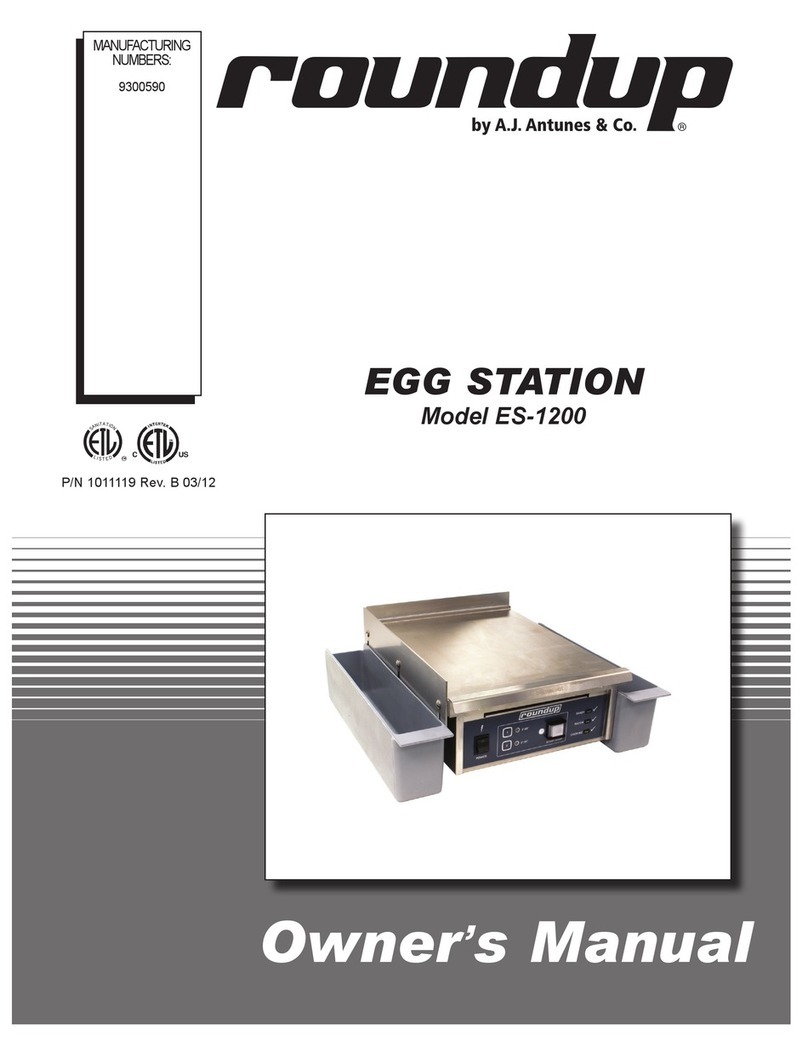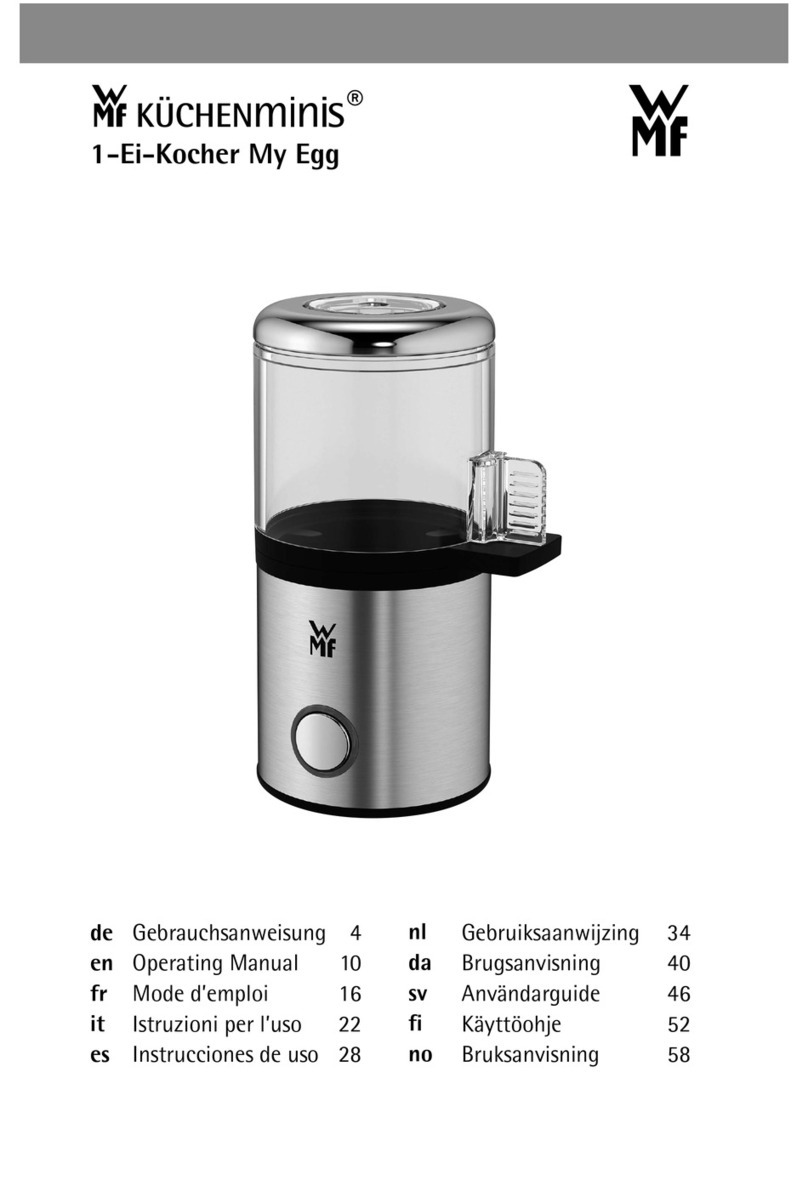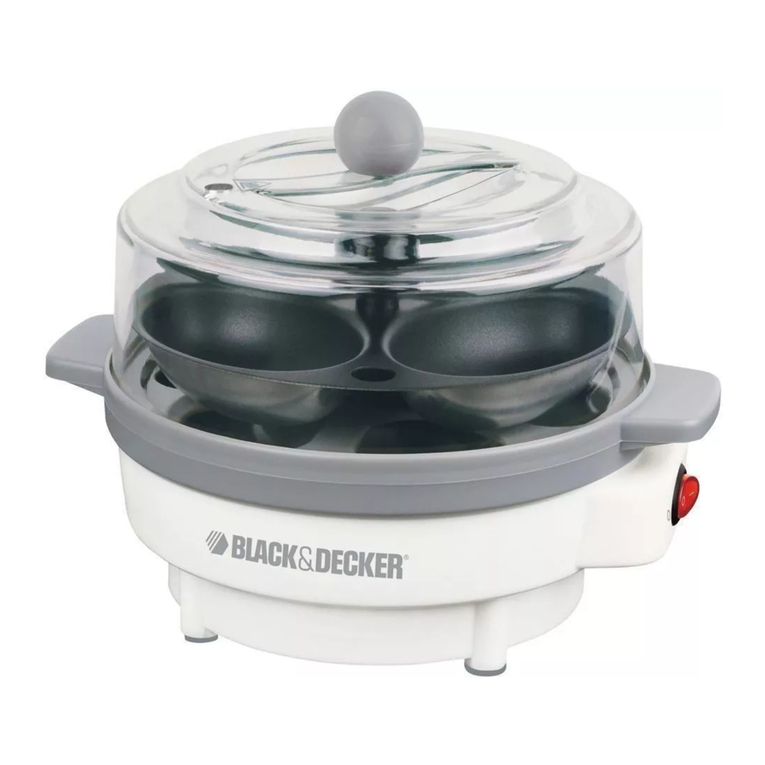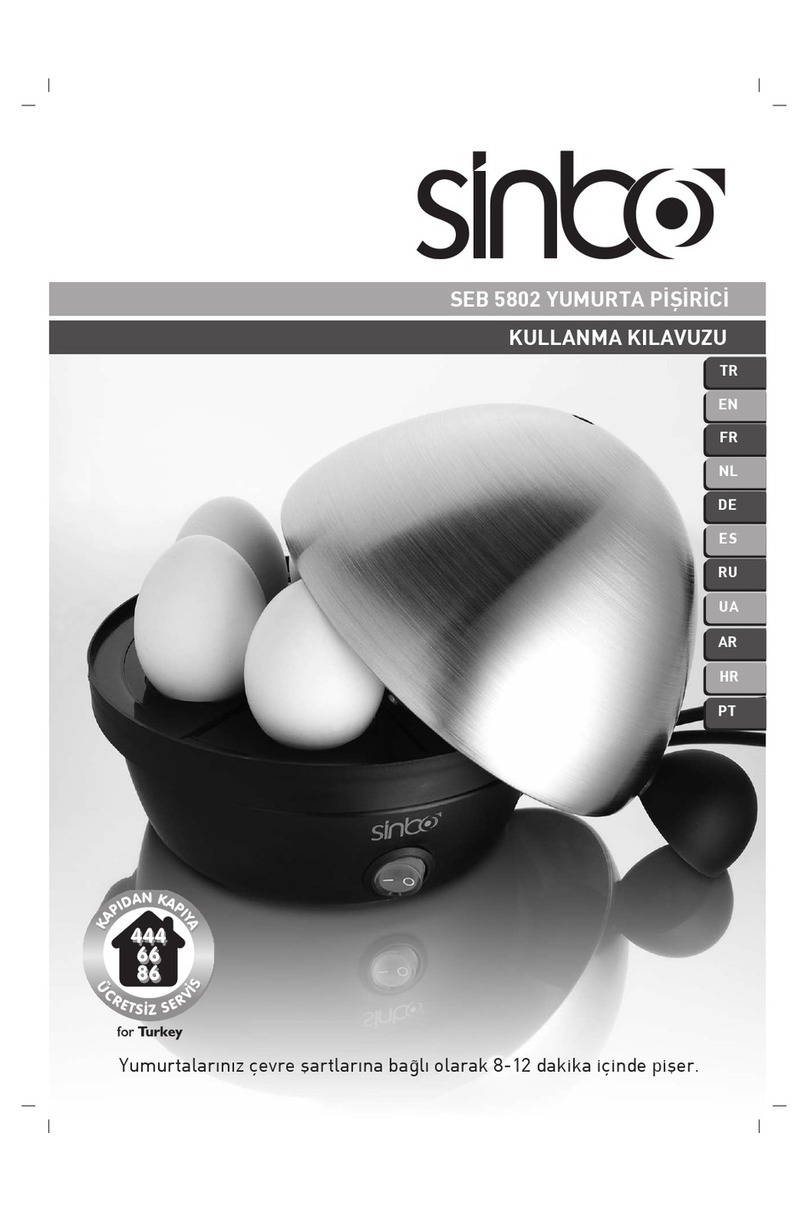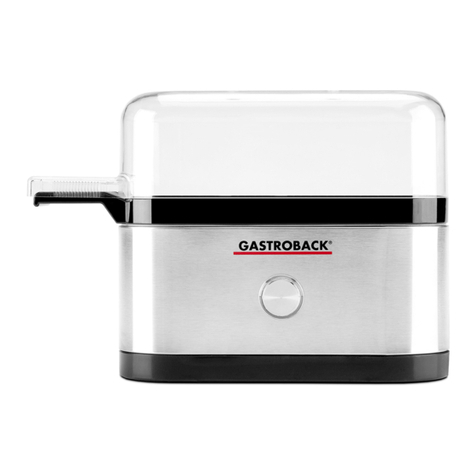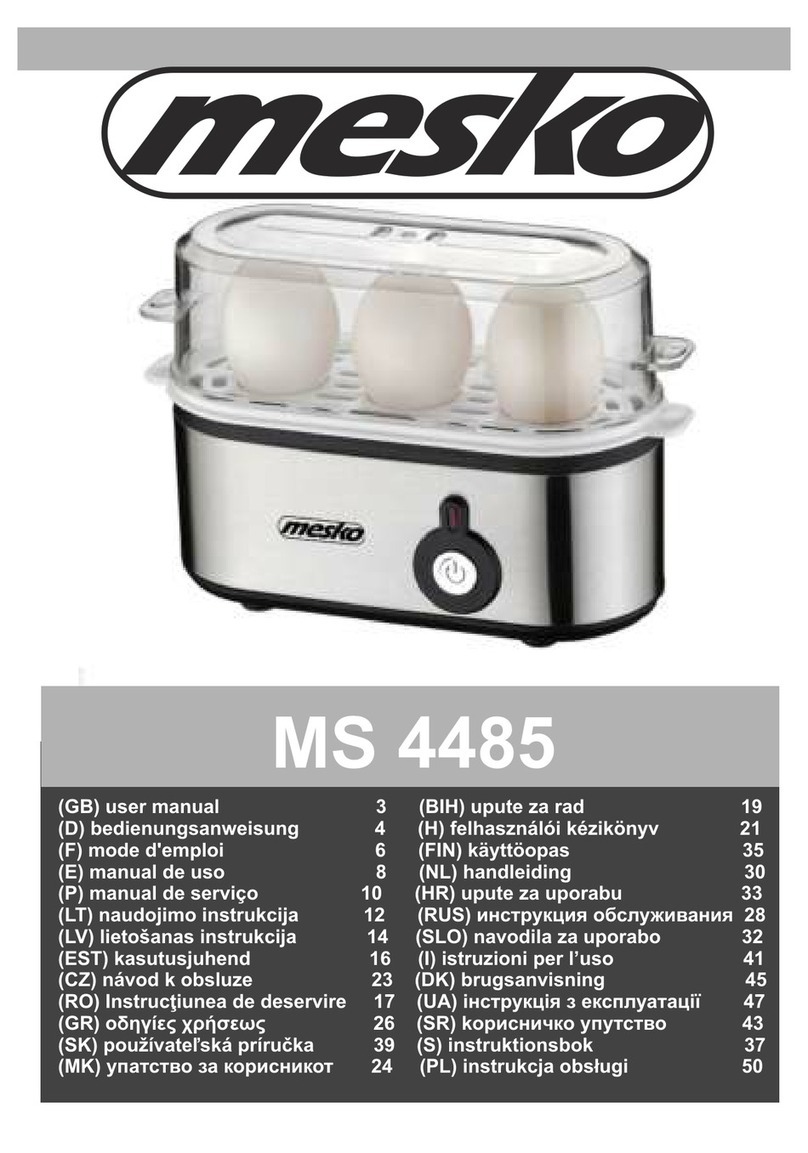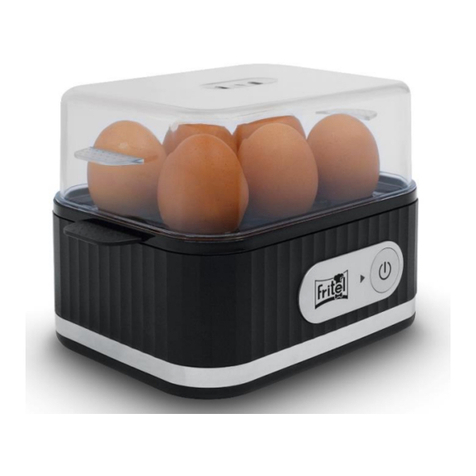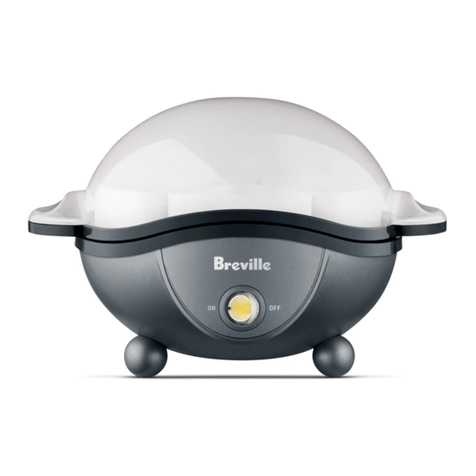
10
3. ASSEMBLAGE
A . Déballage
1. Choisir une grande surface stable et plate pour
déposer la boîte.
2. Ouvrir la boîte et enlever le livret d’instructions et
tout autre document.
3FUJSFS MB DBMF EF MB CPÔUF FU SFUJSFS MF DVJTFVS Ë
oeufs.
&OMFWFS UPVU FNCBMMBHF FOUPVSBOU MF DVJTFVS Ë
VGT
5. Enlever tout autre pièce emballée dans la boîte
et enlever l’emballage les entourant. Vérier les
emballages pour toutes les pièces répertoriées
dans la section « Caractéristiques produits » avant
de jeter la boîte.
6. Enlever toute étiquette de protection ou étiquette
promotionnelle.
B. Assemblage
Pour assembler votre cuiseur à œufs Cuisinart® :
1. Rincer toutes les parties détachables dans de l’eau
chaude et savonneuse ou dans un lave-vaisselle
avant chaque utilisation. ATTENTION : L’aiguille
à la base du doseur est extrêmement pointue.
2. NE PAS submerger la base de l’appareil dans
l’eau ou tout autre liquide. La base se nettoie très
facilement avec un linge humide. Consulter les
JOTUSVDUJPOTEFOFUUPZBHFËMBQBHFQPVSQMVT
d’informations.
3. Essuyer soigneusement toutes les parties
EÏUBDIBCMFTFUMFTQMBDFSËDÙUÏEFMBQQBSFJMPV
les ranger lorsqu’elles ne sont pas utilisées.
%ÏQPTFSMFDVJTFVSËVGTTVSVOFTVSGBDFQSPQSF
et sèche.
5. Placer l’accessoire approprié sur le support
inférieur de cuisson.
6. Placer le dôme sur le bac de cuisson.
#SBODIFS MBQQBSFJM 7PUSF DVJTFVS Ë VGT FTU
maintenant prêt pour l’utilisation.
4. CONSEILS D’UTILISATION
Degré de cuisson Eau
A la coque
1 oeuf - 40ml
3 oeufs - 30ml
5 oeufs - 25ml
7/10 oeufs - 20ml
Mollet
1 oeufs - 60ml
3 oeufs - 50ml
5 oeufs - 40ml
7/10 oeufs - 30ml
Œuf dur
1 oeufs - 110ml
3 oeufs - 100ml
5 oeufs - 90ml
7/10 oeufs - 85ml
Omelette VGTNM
Poché 4 oeufs -70/80ml
$VJTTPO SFDPNNBOEÏF QPVS EFT VGT EF UZQF
NPZFO FU DPOTFSWÏT Ë UFNQÏSBUVSF BNCJBOUF
1PVSVOFDVJTTPOEFVGTDPRVFNPMMFUPVEVS
en utilisant le rehausseur, utiliser la mesure pour
7 oeufs.
REMARQUE : Pour de meilleurs résultats, utiliser de
l’eau distillée, l’eau courante contient du calcaire qui
peut provoquer une décoloration des oeufs.
